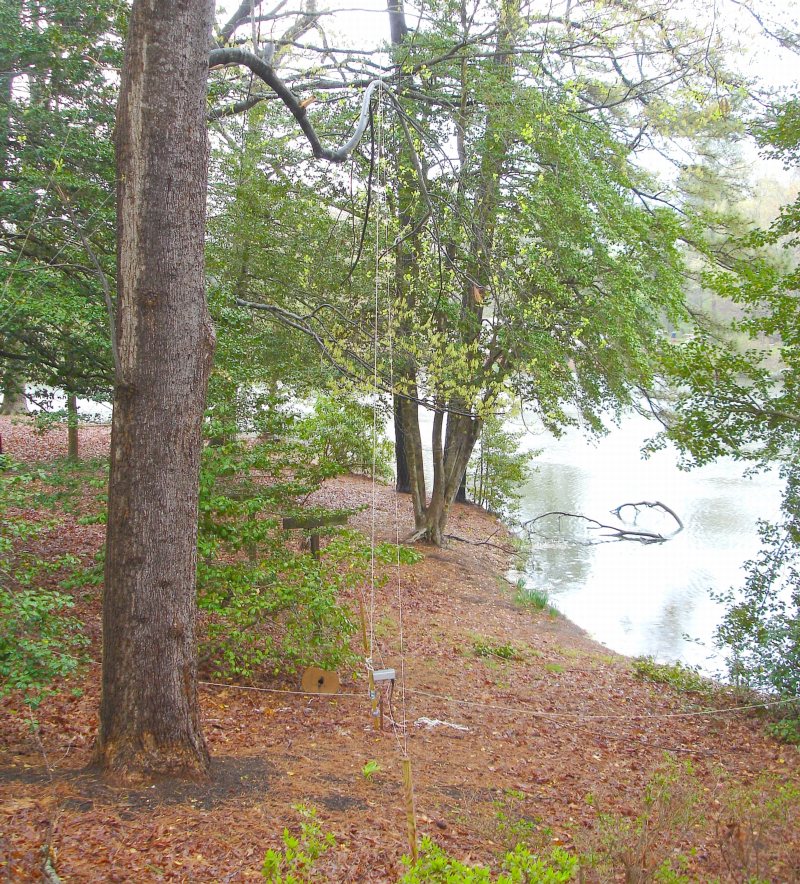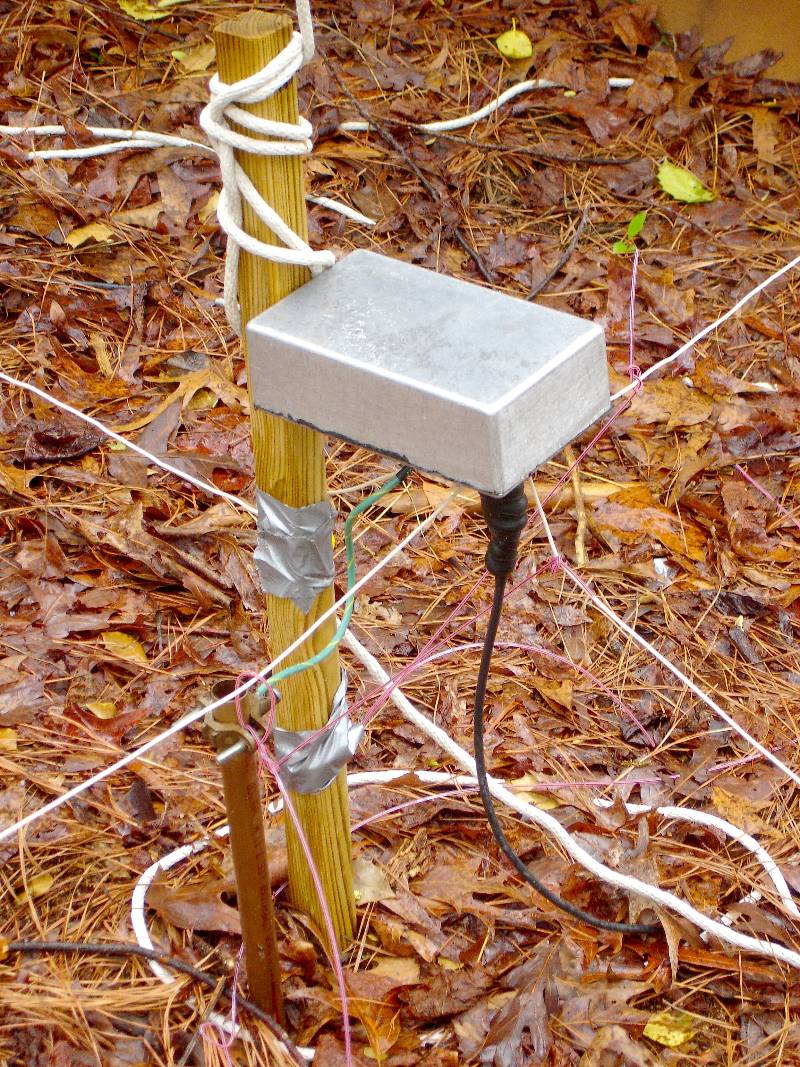The old adage, "You can't work 'em if you can't hear 'em," still applies. For many AM QSOs, I'd modify the adage to, "The better you hear 'em, the more you can enjoy the fine AM audio!" One way to hear them better is to use a directional antenna. Of course, on the lower bands (especially 160 and 80 meters), putting up a full-sized directional antenna is tough, if not impossible for many of us. The good news is that on receive, the antenna does not need to be full-sized. There are many relatively small directional receive-only antenna designs out there. One is the
K9AY.
The K9AY has been around for over ten years. Gary Breed, K9AY developed the antenna. It is one in the family of antennas called terminated loops. All the details are available at the link below.
Orignal ArticleI built one of these antennas in December 2006. It consists of two loops at right angles. Each loop (actually a triangle) is about 85 feet of wire. Only one support is needed, and that only needs to be 25-30 feet high. I used a tree branch. A lightweight mast would work well too. Each loop is about 30 feet across at the bottom, so not much space is needed on the ground.
 Loops Supported by a Low Tree Branch
Loops Supported by a Low Tree BranchMaking and supporting the loops is pretty easy and quick. The control box will take a little more time, but is not difficult. The box contains a few relays and a matching transformer (all the details are in the article above).
 Out Door Control Box
Out Door Control BoxI'd recommend using a
NEMA PVC box from your local home supply/lumber store. I used a metal box and you can too. But, with a metal box, you'll need to isolate the RF connector from the box because you don't want the secondary of your matching transformer and the shield of the coax connected to ground. Grounding them can cause common-mode noise which reduces or eliminates the directivity of the antenna system. There is also an indoor control box. It's pretty simple - a four position switch, a small power supply (you could also use an external wall-wart), a blocking capacitor and two RF connectors of your choice.
So, what about the results? With the K9AY, I could hear many stations I could not hear with my dipole on 80/75-meters. Or, I could hear a station much more clearly, to the point of being able to use a wider IF bandwidth on my receiver for better audio fidelity. The K9AY reduced not only noise (most often thunderstorm QRN) but in some cases reduced QRM.
Working AMers in Europe on 80-meters was made much easier with the K9AY. Listen how clearly 9H1ES (Malta) and F6AQK (France), come through on the K9AY. Reception on the dipole was impossible or quite difficult.
European AM DXDo not think this receiving improvement is only for DX signals. Often the improvement was on stations within 200 miles. The effect was even more pronounced on 160 meters. Listen to the improvement on the signal from Gary, W1GHW on 1885 kHz at 10 PM (local time). The first part is on my 160 meter dipole. After about 25 seconds I switch to the K9AY. Then I switch back and forth a few times to show the effect. Gary's station is located about 320 miles from mine.
W1GHW on 160 MetersAnd the K9AY improved reception during daylight hours too. Listen to K8TV on 75-meters at 2-o'clock in the afternoon (local time). The first part of the clip is receiving with the dipole. Then I switched to the K9AY. The difference is pronounced.
K8TV, DaytimeIt's also important to note, my location is pretty quiet, so it's not like I had tons of noise on the dipole (the receiver's S-meter was hovering around S2-3). K8TV is located almost 400 miles from my QTH. By using the Northwest direction of the K9AY, the reception was improved greatly.
As a bonus, if you are into AM Broadcast Band Listening (BCL) or BC DXing, the K9AY can help here too. The clip below shows how I could receive two rather strong stations on the same frequency (1540 kHz) by switching directions on the K9AY. Pretty sweet!
Two on 1540 kHzIf you would rather buy than build, there's at least one commercial version of the K9AY out there. The site below also has a nice video demonstrating the directional properties of the K9AY.
Array Solutions K9AYRemember, the K9AY is but one option of many in the realm of receiving antennas. There are antennas that have superior performance like Beverages (needs more room), some are a little easier to build, like the EWE (covers only one or two directions) and some may also cover a wider range of frequencies, like phased verticals (complicated and/or expensive). The K9AY offers four directions in a small space. If you want to hear better in all directions, don't have much space, and don't want to spend much money, try the K9AY.
So, instead of better living through chemistry, let's have some better listening through antennas. I hope to hear you on the bands soon.



